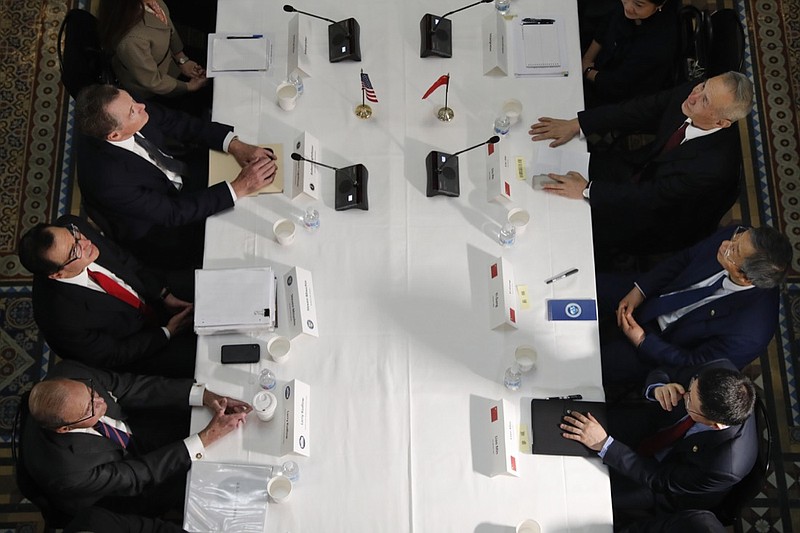President Donald Trump said the United States would keep tariffs on $50 billion worth of Chinese goods in place even if the two sides reached a trade deal, channeling a tougher approach as his negotiators head to Beijing this weekend for a crucial round of talks.
Trump's remarks, made in a television interview that aired Friday, are likely to unsettle Chinese negotiators, whose main goal in the talks is to convince the United States to remove as many of the $250 billion worth of tariffs that have been imposed.
While Trump had agreed late last month not to raise tariffs on Chinese goods, the administration is coalescing around the need to retain at least some of the tariffs as it looks for a way to ensure that China keeps whatever promises it makes in a trade agreement.
Robert Lighthizer, Trump's top trade adviser, prefers to phase out many of the tariffs over time as China proves its willingness to follow through with economic changes sought by the Trump administration, people familiar with his thinking say. But it is unclear whether China will make enough concessions to satisfy the United States if the tariffs remain in effect.
The two sides are now pushing for a summit in late April to sign a trade deal.
"I think we're getting very close," the president said in an interview aired on Fox Business Network on Friday morning. "That doesn't mean we get there, but I think we're getting very close."
The deal is not public, and its contents are not exactly clear. But people familiar with the negotiations say the outcomes would include hundreds of billions of dollars of purchases of U.S. products, an agreement by China to end its long-standing practice of pressuring companies to hand over technology and trade secrets and reducing certain barriers to U.S. companies who operate in China, including financial firms.
Still, politicians on both sides of the aisle have been suspicious that China is making promises that may be too vague to be enforceable and recycling old commitments it has made to past administrations. They have cautioned the Trump administration against being too eager to strike a deal.
"Now's not the time to drop $200B in tariffs just because China's close to a deal," Sen. Chuck Schumer, D-N.Y., the minority leader, tweeted at the president Thursday. "For US workers, a deal with China that loosens any tariffs before we can verify China's keeping their end of the bargain would render the agreement useless."
The talks appear to have bogged down over how the deal will be enforced. The United States is insisting that it be able to reimpose tariffs without any input or retaliation from China if there is any infringement of the agreement. But China has rejected such a mechanism as potentially compromising its sovereignty.
